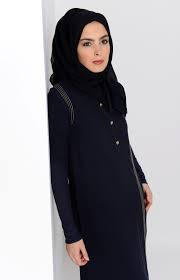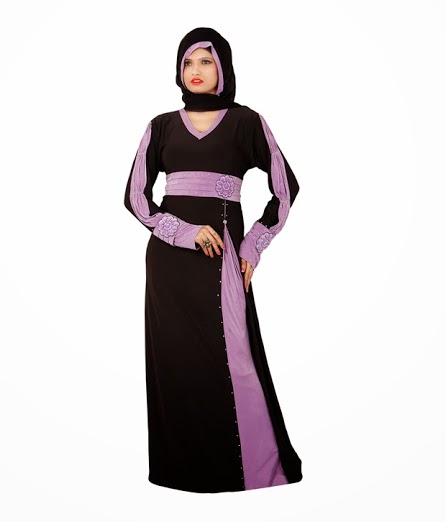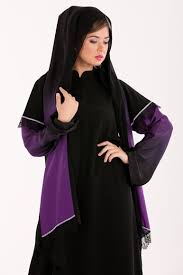About Islamic Art
Source (google.com.pk)
Islamic art encompasses the visual arts produced from the 7th century onwards by people who lived within the territory that was inhabited by or ruled by culturally Islamic populations.[1] It is thus a very difficult art to define because it covers many lands and various peoples over some 1400 years; it is not art specifically of a religion, or of a time, or of a place, or of a single medium like painting.[2] The huge field of Islamic architecture is the subject of a separate article, leaving fields as varied as calligraphy, painting, glass, ceramics, and textiles, among others.
Islamic art is not at all restricted to religious art, but includes all the art of the rich and varied cultures of Islamic societies as well. It frequently includes secular elements and elements that are frowned upon, if not forbidden, by some Islamic theologians.[3] Apart from the ever-present calligraphic inscriptions, specifically religious art is actually less prominent in Islamic art than in Western medieval art, with the exception of Islamic architecture where mosques and their complexes of surrounding buildings are the most common remains. Figurative painting may cover religious scenes, but normally in essentially secular contexts such as the walls of palaces or illuminated books of poetry. The calligraphy and decoration of manuscript Qu'rans is an important aspect, but other religious art such as glass mosque lamps and other mosque fittings such as tiles (e.g. Girih tiles), woodwork and carpets usually have the same style and motifs as contemporary secular art, although with religious inscriptions even more prominent.
"Islamic art developed from many sources: Roman, Early Christian art, and Byzantine styles were taken over in early Islamic art and architecture; the influence of the Sassanian art of pre-Islamic Persia was of paramount significance; Central Asian styles were brought in with various nomadic incursions; and Chinese influences had a formative effect on Islamic painting, pottery, and textiles."[4] Though the whole concept of "Islamic art" has been criticised by some modern art historians,[5] calling it a "figment of imagination"[6] or a "mirage",[7] the similarities between art produced at widely different times and places in the Islamic world have been sufficient to keep the term in wide use by scholars.[8]
There are repeating elements in Islamic art, such as the use of geometrical floral or vegetal designs in a repetition known as the arabesque. The arabesque in Islamic art is often used to symbolize the transcendent, indivisible and infinite nature of God.[9] Mistakes in repetitions may be intentionally introduced as a show of humility by artists who believe only God can produce perfection, although this theory is disputed.[10][11][12]
Typically, though not entirely, Islamic art has focused on the depiction of patterns and Arabic calligraphy, rather than on figures, because it is feared by many Muslims that the depiction of the human form is idolatry[13] and thereby a sin against God, forbidden in the Qur'an. Human portrayals can be found in all eras of Islamic art, above all in the more private form of miniatures, where their absence is rare. Human representation for the purpose of worship is considered idolatry and is duly forbidden in Islamic law, known as Sharia law. There are also many depictions of Muhammad, Islam's chief prophet, in historical Islamic art.[14][15] Small decorative figures of animals and humans, especially if they are hunting the animals, are found on secular pieces in many media from many periods, but portraits were slow to develop.
Calligraphic design is omnipresent in Islamic art, where, as in Europe in the Middle Ages, religious exhortations, including Qur'anic verses, may be included in secular objects, especially coins, tiles and metalwork, and most painted miniatures include some script, as do many buildings. Other inscriptions include verses of poetry, and inscriptions recording ownership or donation. Two of the main scripts involved are the symbolic kufic and naskh scripts, which can be found adorning and enhancing the visual appeal of the walls and domes of buildings, the sides of minbars, and metalwork.[9] Islamic calligraphy in the form of painting or sculptures are sometimes referred to as quranic art.[16]
East Persian pottery from the 9th to 11th centuries decorated only with highly stylised inscriptions, called "epigraphic ware", has been described as "probably the most refined and sensitive of all Persian pottery".[17] Large inscriptions made from tiles, sometimes with the letters raised in relief, or the background cut away, are found on the interiors and exteriors of many important buildings. Complex carved calligraphy also decorates buildings. For most of the Islamic period the majority of coins only showed lettering, which are often very elegant despite their small size and nature of production. The tughra or monogram of an Ottoman sultan was used extensively on official documents, with very elaborate decoration for important ones. Other single sheets of calligraphy, designed for albums, might contain short poems, Qu'ranic verses, or other texts.
The main languages, all using Arabic script, are Arabic, always used for Qu'ranic verses, Persian in the Persianate world, especially for poetry, and Turkish, with Urdu appearing in later centuries. Calligraphers usually had a higher status than other artists.
Islamic Art Abaya Designs 2014 Dress Collection Dubai Styles Fashion Pics Photos Images Wallpapers

Islamic Art Abaya Designs 2014 Dress Collection Dubai Styles Fashion Pics Photos Images Wallpapers

Islamic Art Abaya Designs 2014 Dress Collection Dubai Styles Fashion Pics Photos Images Wallpapers

Islamic Art Abaya Designs 2014 Dress Collection Dubai Styles Fashion Pics Photos Images Wallpapers

Islamic Art Abaya Designs 2014 Dress Collection Dubai Styles Fashion Pics Photos Images Wallpapers

Islamic Art Abaya Designs 2014 Dress Collection Dubai Styles Fashion Pics Photos Images Wallpapers

Islamic Art Abaya Designs 2014 Dress Collection Dubai Styles Fashion Pics Photos Images Wallpapers

Islamic Art Abaya Designs 2014 Dress Collection Dubai Styles Fashion Pics Photos Images Wallpapers

Islamic Art Abaya Designs 2014 Dress Collection Dubai Styles Fashion Pics Photos Images Wallpapers

Islamic Art Abaya Designs 2014 Dress Collection Dubai Styles Fashion Pics Photos Images Wallpapers

Islamic Art Abaya Designs 2014 Dress Collection Dubai Styles Fashion Pics Photos Images Wallpapers

Islamic Art Abaya Designs 2014 Dress Collection Dubai Styles Fashion Pics Photos Images Wallpapers

Islamic Art Abaya Designs 2014 Dress Collection Dubai Styles Fashion Pics Photos Images Wallpapers

Islamic Art Abaya Designs 2014 Dress Collection Dubai Styles Fashion Pics Photos Images Wallpapers

Islamic Art Abaya Designs 2014 Dress Collection Dubai Styles Fashion Pics Photos Images Wallpapers

Islamic Art Abaya Designs 2014 Dress Collection Dubai Styles Fashion Pics Photos Images Wallpapers

Islamic Art Abaya Designs 2014 Dress Collection Dubai Styles Fashion Pics Photos Images Wallpapers

Islamic Art Abaya Designs 2014 Dress Collection Dubai Styles Fashion Pics Photos Images Wallpapers

Islamic Art Abaya Designs 2014 Dress Collection Dubai Styles Fashion Pics Photos Images Wallpapers

Islamic Art Abaya Designs 2014 Dress Collection Dubai Styles Fashion Pics Photos Images Wallpapers

Islamic Art Abaya Designs 2014 Dress Collection Dubai Styles Fashion Pics Photos Images Wallpapers

Islamic Art Abaya Designs 2014 Dress Collection Dubai Styles Fashion Pics Photos Images Wallpapers
.jpg)
No comments:
Post a Comment